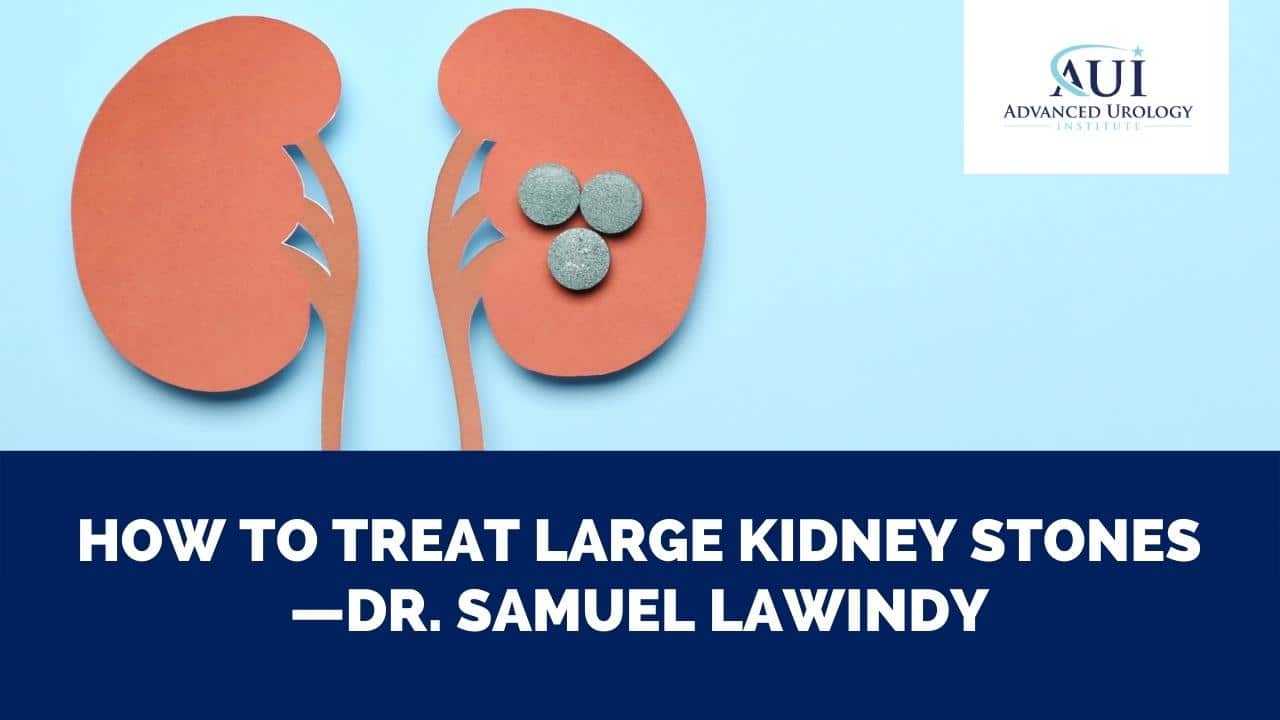 Kidney stones that range from 0.5 to 4.0 millimeters in diameter can and often do go away on their own. Such stones pass easily in urine without causing pain as long as there is adequate water intake to increase urine flow and aid their passage. These stones pass on their own within a few days, though most will do so within 2-3 weeks.
Kidney stones that range from 0.5 to 4.0 millimeters in diameter can and often do go away on their own. Such stones pass easily in urine without causing pain as long as there is adequate water intake to increase urine flow and aid their passage. These stones pass on their own within a few days, though most will do so within 2-3 weeks.
Problematic kidney stones
On the other hand, kidney stones that are 5 millimeters or bigger in diameter don’t go away easily on their own. As they move down the urinary tract, they may get stuck and cause severe pain that may require narcotics for initial pain relief.
Then as the stone continues to move down the urinary tract, NSAIDs (non-steroidal anti-inflammatory medication) can be used to manage the pain. Drinking a lot of water may help to pass such stones.
With guidance and supervision of your urologist, you can stay at home and wait for kidney stones to pass on their own. But when in too much pain, you may need hospitalization for pain control and intravenous (IV) fluids to boost hydration and further help the stones to pass.
Medication to help bothersome stones pass
Kidney stones that are 5-10 millimeters in diameter may be problematic, but they still have a reasonable chance of going away on their own. To aid their passage, your urologist may prescribe the drug tamsulosin (Flomax), an alpha-blocker medication that relaxes the muscles of the distal ureter—the portion of the ureter right above your bladder.
Relaxing the ureter helps kidney stones to pass on their own in urine over a period of 2-4 weeks. It also relieves discomfort associated with the stones. But tamsulosin is equally a well tolerated drug that increases the probability of passing a stone from home and without further medical intervention.
Of course, giving the drug does not guarantee that the stone will pass in urine. However, as long as there is no severe pain that needs hospital admission for a surgical procedure, the drug is great option for passing kidney stones from home.
When is surgery the best option?
If kidney stones fail to go away on their own for up to 6 weeks, surgery is the best option. In fact, a timely surgical removal of the stones helps to avoid possible blockage of the ureter.
Ureter blockage can cause pain, problems with urination, blood in urine, and changes in the amount of urine produced. Also, if left untreated, a stone that is blocking urine flow can cause complications, such as recurrent urinary tract infections (UTI), hydronephrosis, and permanent kidney damage.
Equally, when kidney stones occur alongside a urinary tract infection, sepsis may develop. Since sepsis is a life-threatening condition, it may be necessary to have a tube (catheter) placed in the ureter or kidney to drain the infected urine.
Surgical interventions include:
- Shock wave lithotripsy
It is the least invasive outpatient procedure for removing kidney stones that fail to pass on their own. A urologist uses a machine to generate waves that are then targeted at the kidney stone with the help of imaging guidance. No incisions are made.
A stone is hit several times with the waves in a procedure that takes roughly 2 hours and with the patient under general anesthesia. In the process, the stone breaks into smaller pieces, which go away on their own in urine without much discomfort.
Shock wave lithotripsy is advisable for smaller kidney stones, 2 centimeters or less in diameter, but that are located high up in the kidney.
- Ureteroscopy
For kidney stones 1.0 to 1.5 centimeters in diameter, ureteroscopy is an effective option. The minimally invasive outpatient procedure involves placing a small, lighted tube with a camera at its tip—ureteroscope—into the urethra, then into the bladder, and further up the ureter.
A smaller laser device is then passed through the scope to help break down the stone. The resulting stone fragments are removed via a basket, a stent, or rubber tube passed through the scope.
- Percutaneous nephrolithotomy and nephrolithotripsy
When kidney stones are bigger than 2 centimeters in diameter, percutaneous nephrolithotomy or nephrolithotripsy is the preferred surgical intervention. In both procedures, the urologist makes an incision in the back to create a pathway to the kidney.
A nephroscope—a tube with surgical tools and a camera on its tip—is inserted through the incision. If the surgical tools are used to remove the stone, the procedure is called nephrolithotomy. But when the tools are only used to break up the stone, the procedure is called nephrolithotripsy.
Through the nephroscope, the doctor administers a laser or ultrasonic device that vibrates at high frequency to fragment the stone. Then suction is passed via the tube to remove the fragments. The doctor may also insert a stent in the ureter to help with swelling and enable the patient to urinate.
- Robotic assisted laparoscopic nephrolithotomy
For patients with bigger, more problematic stones, robotic assisted surgery is a great option. During the procedure, the surgeon makes small incisions in the abdomen through which a laparoscope (a lighted tube with tiny surgical tools and a camera at its tip) is inserted.
Using the surgical tools controlled by a computer console in the operating room, the doctor accesses and opens up the kidney to remove the stone.
Are you suspecting that you have kidney stones? At Advanced Urology Institute, we offer a range of surgical and non-surgical interventions to deal with kidney stones.
For more information on prevention and treatment of kidney stones and other urological problems, visit the site “Advanced Urology Institute.”















